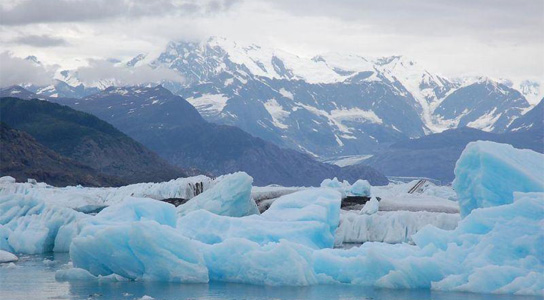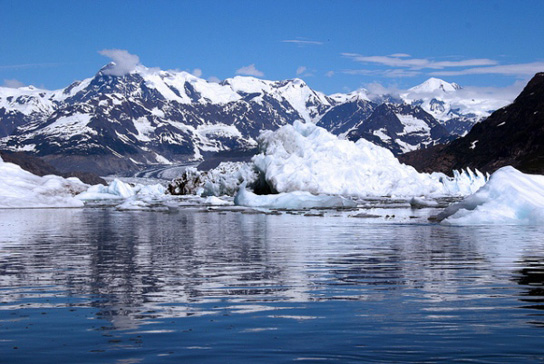Columbia Glacier Retreating to the Sea in Alaska
May 2, 2012

It took seven years, but the photographic record of the Columbia Glacier in Prince William Sound on Alaska’s southern central Pacific coast has been compiled into a time-lapse video that documents the glacier’s rapid ice discharge. This is helping researchers to understand better how tidewater glaciers are contributing to seal-level rise.
The video itself was assembled by the glaciologist William Pfeffer, from the University of Colorado Boulder, and it shows large chunks of ice splitting away from the main glacier. The ice then flows out to the sea. The glacier began to retreat rapidly in the early 1980s, after being stationary for more than a century. 150 cubic kilometers of ice was spilled into the ocean and the glacier’s terminus has retreated by roughly 20 kilometers.

In 2004, Pfeffer started taking regular photos of the glacier’s terminus. He has now amassed hundreds of images into a time-lapse video to visualize the glacier flow. It was presented at the International Polar Year 2012 scientific meeting in Montreal, Canada, on April 25th.
Typically, for mountain glaciers, the ice flows faster as it gets thicker and steeper. However, the dynamics of glaciers that advance into coastal water are different. Ice is pushed into the ocean and is thinned. Once there, it becomes buoyant, lifting its weight and reducing friction.
The whole glacier became ungrounded in 2007. This was one of the first times that scientists could directly observe the transitions between the floating and grounded states in a temperate tidewater glacier.
No comments:
Post a Comment